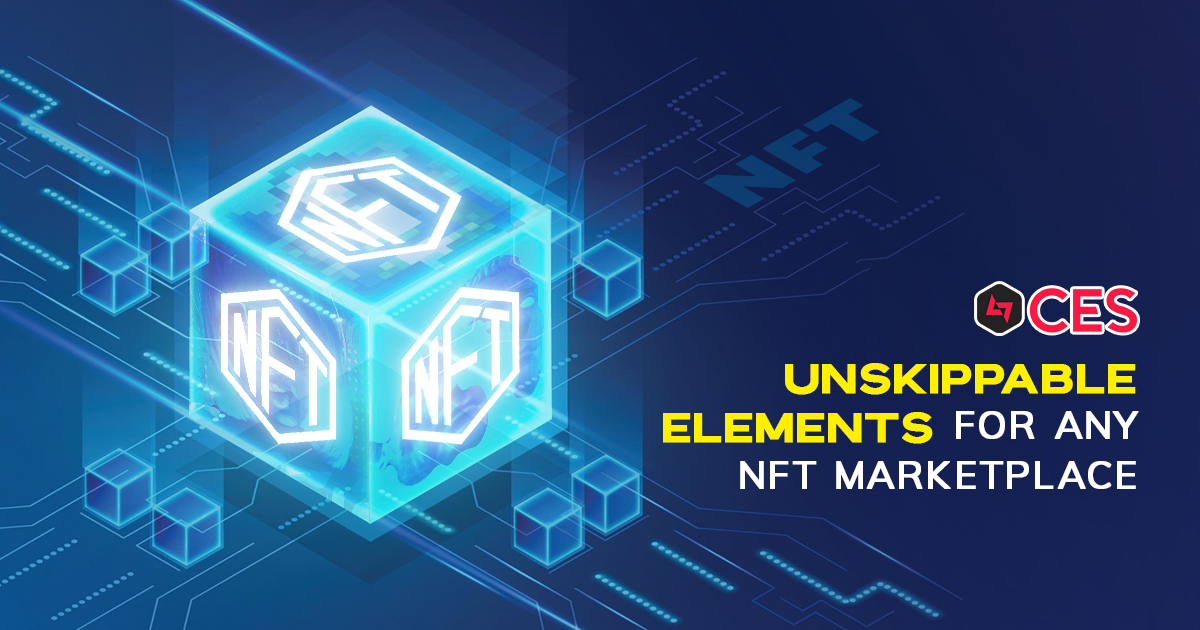The NFT space is cruising over US$2.15 billion worth of capitalization when this blog is being penned. That should signify what this virtual market holds for tomorrow’s internet natives. With non-fungible tokens crossing the stage of being perceived as get-rich-quick schemes, they have started to make a real impact in people’s lives, albeit not very directly, unlike some AI-powered chat tools. The NFT marketplace model has been carrying Web3’s soul for over half a decade, and it will continue for a lot more time to come. But, here, we will see the important features an NFT marketplace must have in order to stay relevant to the community at any time.
Easy-to-Perform User Registration
An NFT marketplace should have a portal where users can create their accounts, similar to any eCommerce website, in simple steps. Enabling multiple steps for logging into the platform can be vital to ensure the safety of the platform and its users. Having a sleek and seamless user interface can make the platform loved by users, and providing on-the-go guides for new users can help increase engagement levels on the NFT marketplace.
Wallet Provisions
Offering users options to create a wallet account or link their existing wallet can be crucial to winning the NFT user community. Making the platform compatible to work with multiple prominent wallet applications like MetaMask, Coinbase, Rainbow, and Trust Wallet can help an NFT marketplace track users quickly. Also, for users creating their wallets in-app, it is essential to provide enough knowledge on their usage and functional restrictions.
Minting and Management Portal
This portal is of immense help to creators who can mint NFTs of their creative works and manage them within a single dashboard. The portal comes with a minting engine that allows users to create NFTs by entering the necessary information, including some exclusive information like the token standard to be utilized and total supply. The NFT management portal enables them to look after the market performance of their NFTs in real-time.
Storefront
The NFT marketplace’s storefront caters to buyers by providing extensive information about all NFTs listed on the platform. Information such as description, price, images, owners, and smart contracts are outlined in the portal with options to offer NFTs for a fixed price or place a bid option. This portal should be vibrant and resonate with your business’s nature to the users. Also, offering an intuitive experience is a must to thrive as a business.
Sophisticated Search Engine
A search engine is a must-have feature for any NFT marketplace for obvious reasons – one cannot navigate the whole platform to find a bird-themed NFT, for instance. Placing the search engine in a prominent location on the website will be helpful to users, improving their overall experience. Adding options like Filter and Sort can enhance this further. Emphasizing maximum efficiency on such provisions can truly be a game-changer for businesses.
Community Elements
The advent of the internet has shown us the endless possibilities to connect with people via social networking, which can be a great addition when added to an NFT marketplace. Enabling options for sharing and interaction, alongside modeling the marketplace similar to a socializing platform, could bring in tech-savvy audiences. This option can make your NFT trading platform a crowd favorite which is necessary to captivate the future Web3 market.
Auction Portal
As a reason why NFTs became popular, auctions cannot be written off from the space, and any NFT marketplace should have one to attract collectors. Since most assets sold here have subjective value, the auction portal is a must-have element. It must have options to place and withdraw bids, alongside live updates and bid history to help bidders. Updates can even be availed to non-participants to increase buzz around the NFT.
NFT Status Updates
A portal to make users aware of an NFT’s authenticity and other statistics can be immensely useful for pro-traders. Details such as the number of viewers of a particular NFT’s webpage listing and the number of participants in its auction can be helpful for collectors to decide on the price they are willing to pay. This is where marketplace administrators come into the act by scrutinizing NFT items from various angles.
Reviews and Ratings
What is a Web3 platform without mutual interaction? Well, reviews and ratings on an NFT marketplace allow healthy interactions between sellers, collectors, and new users in an indirect manner. Through these facilities, a potential buyer can know more about an NFT collection from current or previous holders even before spending a penny. This enhances accountability and trust in a decentralized setting, ensuring NFT sellers provide more utilities than fancy-looking projects.
Security Protocols
With any NFT marketplace, ensuring high-grade security is essential to prevent malicious actors from utilizing the platform for ill intentions. Various security elements focusing on both the user and platform end can be integrated. Common ones include multi-factor authentication (MFA), jail login, encryption, DDOS, SSRF, and CSRF. Providing the maximum security possible increases user trust in an NFT marketplace, an important element when it comes to business management.
Why Choose CES to Build Your NFT Marketplace?
At CES, we intend to provide world-class NFT marketplace platforms for entrepreneurs aspiring to make their mark in the Web3 space. With a platform framed by considering the elements discussed in the blog, we ensure to bring solutions that can contribute immensely to the new-age business space. Contact our professionals by filling out the below form to discuss the prospect of building an NFT marketplace.
